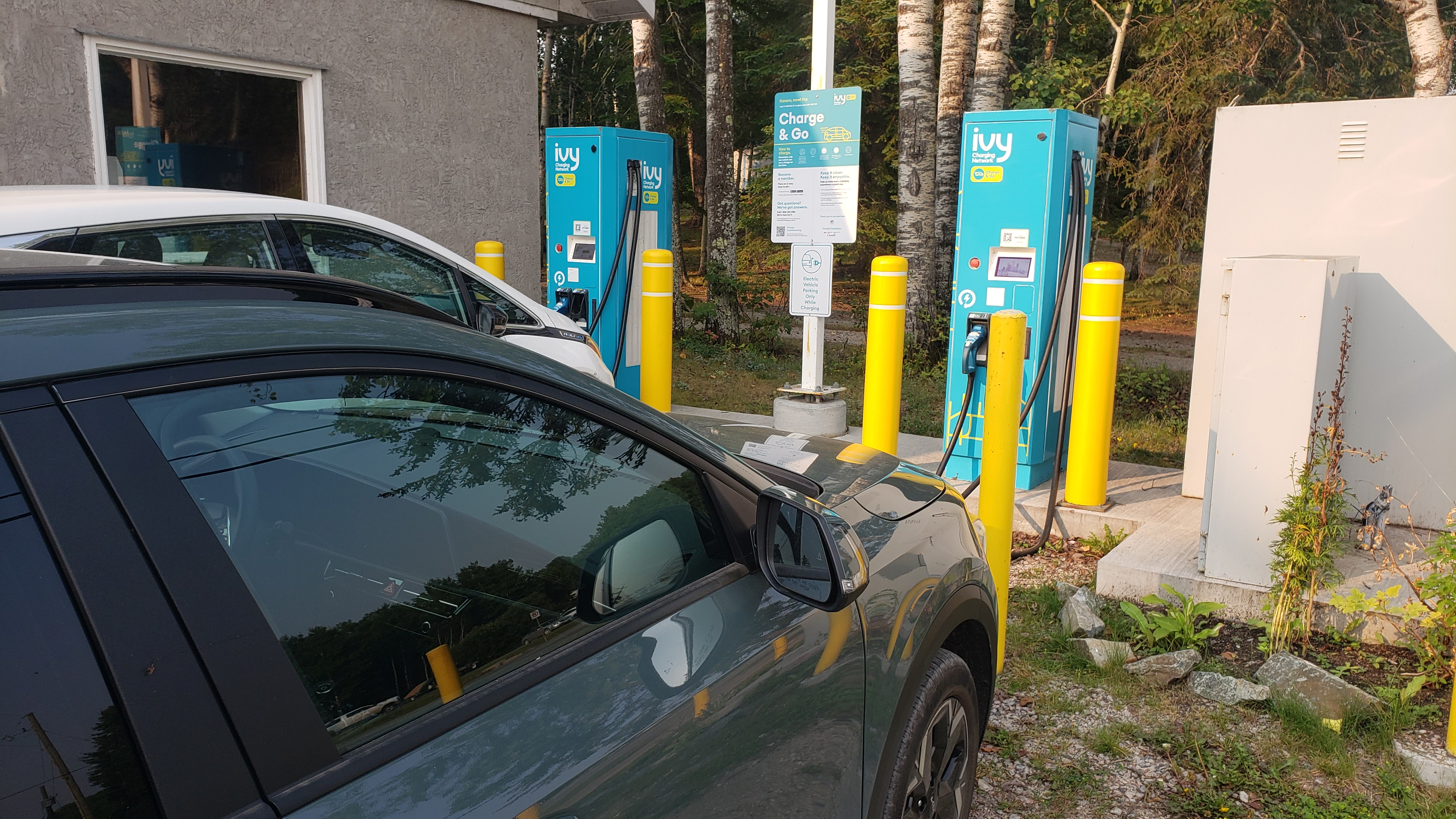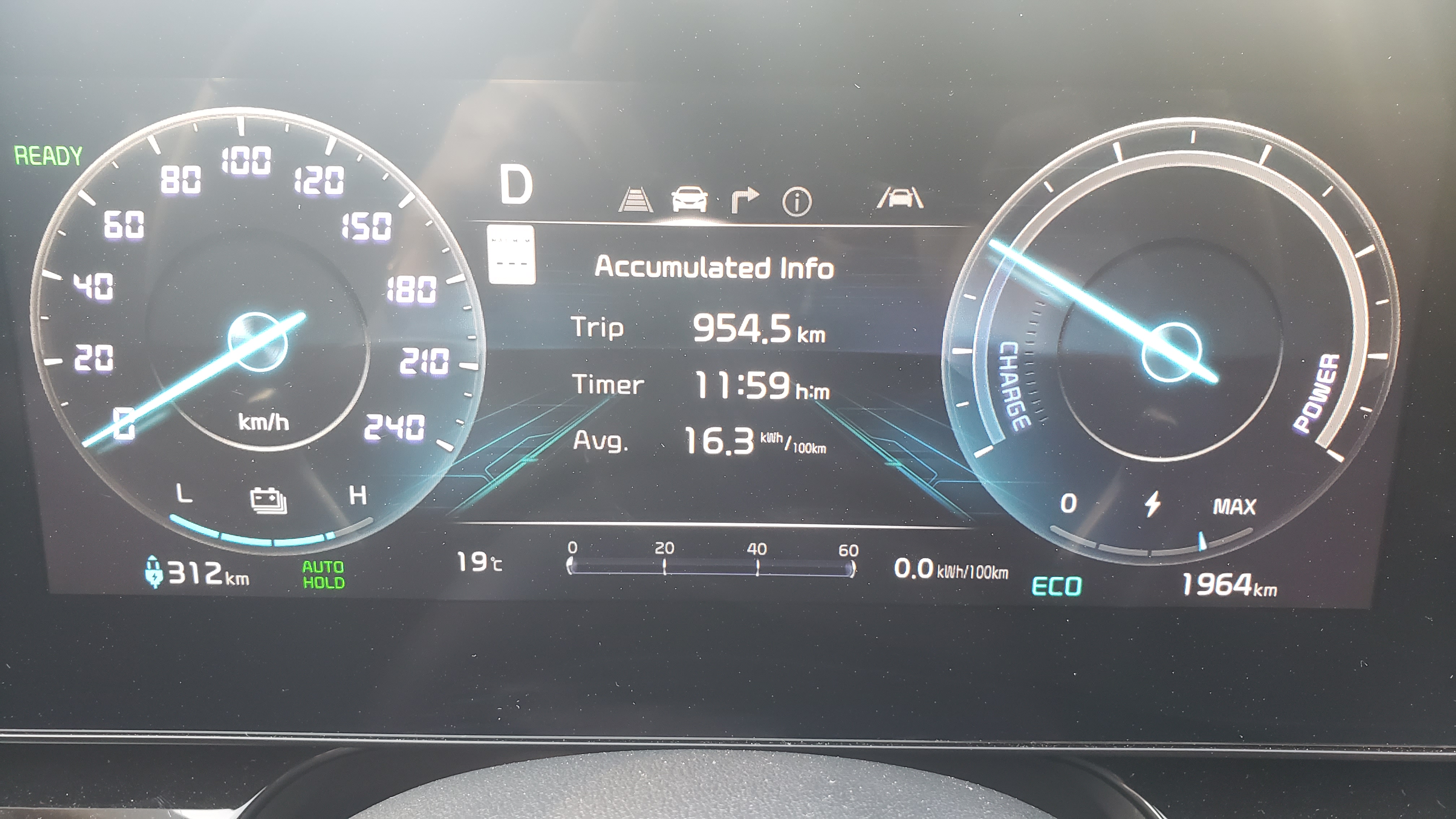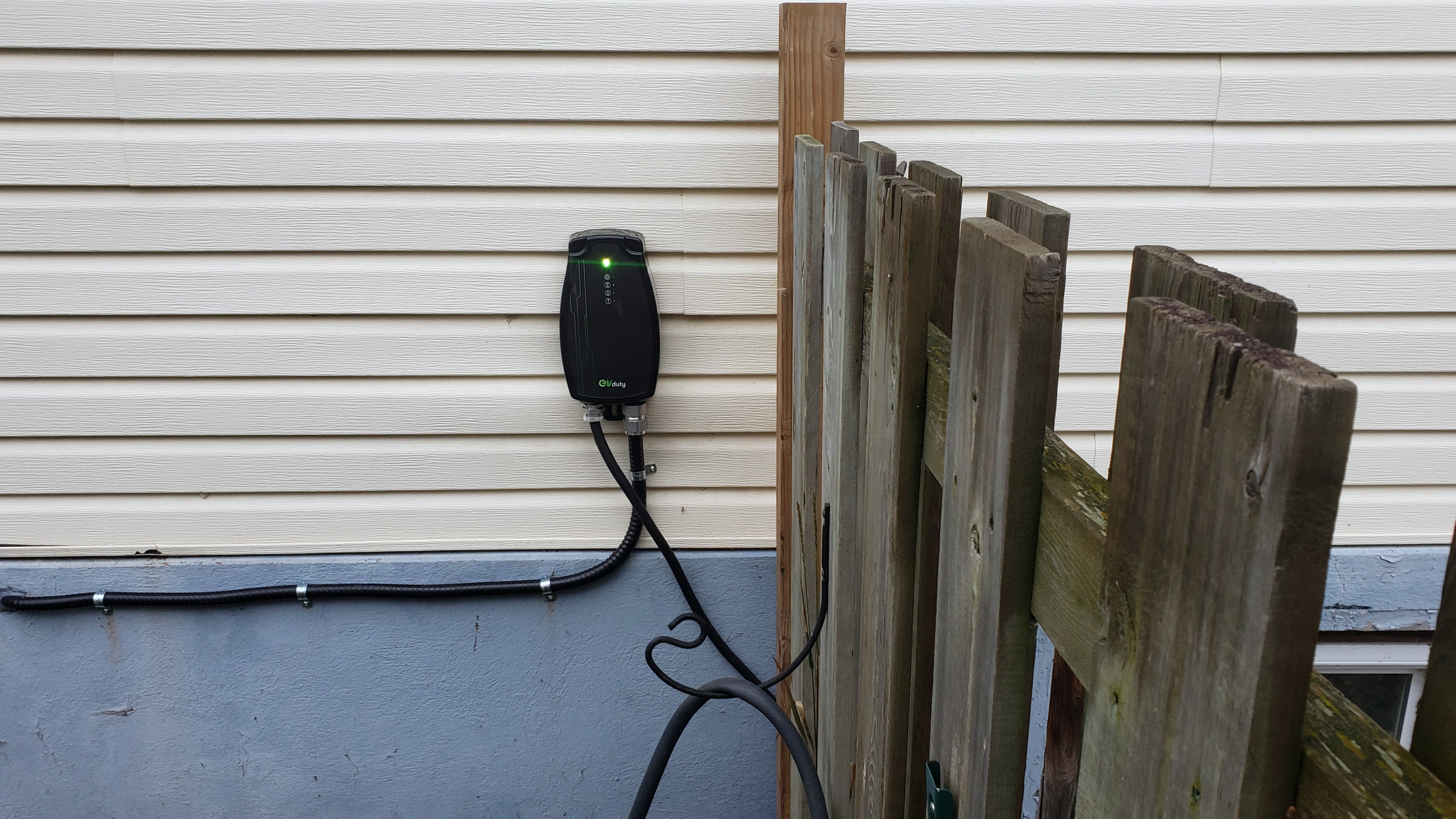One month of that EV life
Recently I marked my first month as the owner of a brand-new 2023 Kia Niro EV! I’ve known for a while now that I wanted my next vehicle to be electric; I didn’t expect it to happen quite so soon. However, the timing was right. The venerable 2010 Mazda 3 I was driving until this summer was finally costing too much, in terms of annual maintenance, and I found myself in a position where I could (just) afford a new car.
Now I’m sharing my experience after one month! I already have a couple of road trips 2000 km on the vehicle, and I have zero regrets so far.
I’m going to keep this post concise. Please @ me if you have further questions. However, if you want to explain something you think I didn’t go into enough detail about, miss me: I did the research. This post is for those who haven’t yet.
Why I Went Fully Electric
My decision to lean towards an EV was based on a few factors:
- The technology is mature enough. EVs are tried and tested. They are a newer technology, of course, so you still see more quantum leaps than you do with ICE vehicles. These tend to create splashy headlines, like Toyota did this summer with its new battery technology. Nevertheless, the EVs you can buy today are neither experimental nor unimpressive.
- It suits my driving needs and style. I drive very little, to the point that I probably shouldn’t own a vehicle at all—but I’m not going to ride public transit in Thunder Bay if I can avoid it.
- I don’t want to have to buy gas. There is no question I will be saving money on fuel. More on this later.
How I Found “The One”
Availability of EVs in my neck of the woods is limited. I fully expected not to have a new vehicle until later next year. I bought some new winter tires for my Mazda and everything! However, as seems to be the case for me at the moment, everything is coming up Kara.
In a way, perhaps the limited supply worked in my favour, for it forced me to consider a vehicle I might otherwise have passed over. I’d driven sedans so long that the idea of getting a “compact SUV” didn’t appeal so much. But the only two EVs in town in my price range available for a test drive both fit that description. Having driven my Niro for a while now, I actually think it’s a great fit in size for me as a single homeowner: it’s small enough that I don’t feel too big on the road, but there’s a bit more cargo capacity than my Mazda 3, not to mention more headroom for my six-foot-four frame.
On the Road, Times Two
August provided me with two perfect opportunities to push my new Niro in ways I won’t often do in the city. First I journeyed to Duluth, Minnesota; a couple weeks later, I went to Lake of the Woods.
The Duluth trip was so I could meet Kala Moria and Brittany Lind in person. They host Left of Skeptic, a paranormal podcast on which I have been a guest a few times. Kala and Brittany are both amazing women, and I’m so happy I could visit their town and spend time with them! Brittany and I ate pizza, bought tea, saw bunnies; then we watched Kala play tuba in her polka band!
The Lake of the Woods trip was out to a cabin on a small island my neighbour owns—these are the same neighbours who moved in last September. It was the perfect way to finish my summer vacation before going back to school.
Both road trips were so much nicer in my new car than they would have been in the old one, which no longer had working AC. Many of the features I enjoyed—smart cruise control, lane-keeping/lane-following, etc.—are simply standard on any type of new vehicle and not unique to EVs. However, the regenerative braking is so cool, and I find that the one-pedal driving suits me very well. I also really like how quiet it is.
Charging on the Road
As I started my research, the algorithm happily threw a lot of FUD articles my way, mostly about EV charging infrastructure and drivers being stranded. “Range anxiety” is definitely the most frequently expressed reservation I hear when I tell people I bought an EV.
I won’t pretend: public charging over long distances sucks. For now. However, it also wasn’t a horror story for me. The inconveniences I experienced were no more taxing than any other type of road trip annoyance.
The issues here in northern Ontario are twofold: quantity of charging stations and maintenance. There aren’t enough, and they aren’t maintained. My car has excellent range, but I would make it to the next station only to find one of the two stations working and already in use—meaning I had to wait. To compound this, the Level 3 stations (also known as “DC fast-charging” stations) in this region are on the slower end of fast. Much higher power, faster charging Level 3 stations are possible. Whether it’s an issue with the electrical transmission infrastructure, cost, or something else, I’m not sure, but we aren’t seeing those stations here yet.

The thing is, this is a solvable problem. Public charging over long distances sucks for now, but it won’t be that way forever. A century ago, we would be having this same conversation about driving a gas-fuelled vehicle long distances instead of the tried-and-tested technology of a horse and buggy.
I will say this: the cost of charging my car was far less than gas. I spent about $65 in total charging on my road trips.

My EV is also extremely efficient. On my second road trip, my average electricity usage was 16.3 kWh/100 km—that is equivalent to 1.83 L/100 km (or 128.5 mpg for you Americans) if using gasoline.
EV Life at Home
At home, it’s a different story. Charging options in Thunder Bay are more prolific than I expected. At first I thought I would get by on those and not bother with installing a charging station at my house.
However, for convenience, I decided to take the plunge and have a Level 2 unit installed at my house. It’s smaller than you might think. And yes, it was expensive—but the upside is that I can now charge my car overnight for practically nothing. Even without switching to my utility’s new “ultra low overnight plan” targeted towards EV owners, I’m anticipating adding less than $10 per month to my electricity bill. Between my car’s scheduling features and the charging station’s app, it’s easy to set up my charging so it only happens overnight and is timed so my car is ready to go by morning.

When I returned from my second road trip, I plugged in my vehicle and charged from about twenty-two percent to eighty percent overnight (manufacturers generally recommend only charging to 100 percent every few months or if you really need the range). I’ve been driving my EV back and forth to work for a week now, and it’s just like driving my old vehicle—just newer and smoother. I have yet to need to charge it again.
I Was Ready for an EV: Are You?
An EV was a great choice for me. I had several privileges that made the choice easier: I could afford one, and I have a house and could afford to install a home charging station, thus eliminating perhaps one of the only pain points to driving an EV in a city. On the same note, I seldom drive long distances, so range isn’t much of a concern for me.
I fully recognize that for many drivers, an EV remains more dream than reality. That’s unfortunate. (There’s also a heavy discussion to be had about the environmental toll of lithium mining, and the general disregard for Indigenous sovereignty that Canadian and other colonial governments are showing as they rush to extract more minerals in lieu of fossil fuels from the Earth.) EVs alone are not a panacea, and the way forward to a greener society requires not just personal EVs but more robust public transit, more walkable cities, and more.
Still, I’m really happy that my circumstances aligned in such a way that I could make this choice! After one month of driving an electric vehicle, I’m a convert. I’ll report back after my Niro’s first Canadian winter to let you know how my EV fares in minus forty below.

